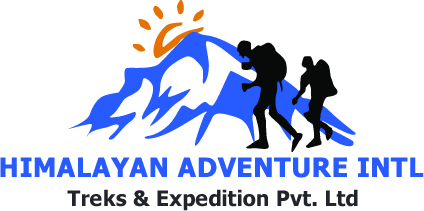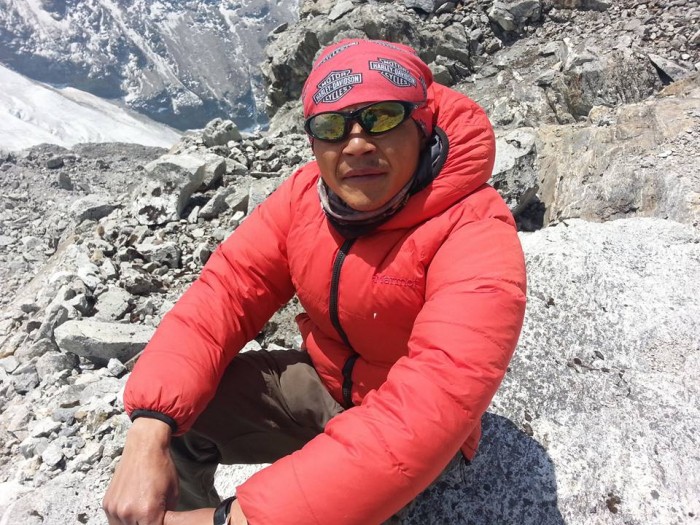Annapurna I Expedition – The Most Dangerous 8,000er in the World
Mount Annapurna I (8,091 m / 26,545 ft) is one of the most legendary and feared peaks in the Himalayas. Known as the “most dangerous 8,000-meter mountain”, Annapurna has a reputation for its steep faces, unpredictable avalanches, and extremely technical climbing routes. While its beauty is mesmerizing, its danger is equally unmatched. For decades, Annapurna has recorded the highest death rate among all 8,000-meter peaks, making climbers wonder: Why is Annapurna so deadly?
In this detailed guide, Himalayan Adventure International Treks provides complete information about the Annapurna I Expedition, including Annapurna 1 Expedition cost, logistics, routes, difficulty, dangers, survival rates, historical significance, and comparisons with other great Himalayan expeditions like Everest, Dhaulagiri, Baruntse, Manaslu, and Cho Oyu.
Whether you are researching the cost of climbing Annapurna, comparing the risks between Everest and Annapurna, or simply curious about Annapurna expedition 1950, this article covers everything in depth.
Mount Annapurna – A Deadly Beauty
-
Location: Annapurna Massif, north-central Nepal
-
Height: 8,091 meters (10th highest mountain in the world)
-
First Ascent: 1950 by Maurice Herzog and Louis Lachenal (French expedition)
-
Nickname: The Killer Mountain
The Annapurna massif contains several major peaks, but Annapurna I is the highest. The first successful ascent in 1950 was a historic milestone—the first-ever climb of an 8,000-meter peak. However, this victory came with tragedy: severe frostbite, amputations, and lifelong consequences for the climbers.
Since then, the Annapurna death rate has been alarmingly high. Historically, one in every three climbers attempting Annapurna did not return, giving it the title of the world’s most dangerous mountain. Although modern climbing equipment, weather forecasting, and route management have improved the Annapurna survival rate, the mountain remains extremely dangerous.
Why is Annapurna So Dangerous?
Many climbers ask: “Is Mount Annapurna dangerous? Why is Annapurna so deadly compared to Everest?”
Here are the main reasons:
-
Avalanche Risk: The south face of Annapurna is one of the largest and steepest rock walls in the world. Heavy snowfall and unstable seracs make avalanches frequent and deadly.
-
Technical Routes: Unlike Everest, Annapurna has no “easy” route. All approaches require advanced alpine techniques and expose climbers to objective hazards.
-
Weather Instability: The Annapurna region is prone to sudden storms, reducing summit chances.
-
High Fatality Ratio: The Annapurna climbing deaths have historically been higher than any other 8,000er.
-
Remote Location: Rescue operations in Annapurna are more difficult compared to Everest due to less infrastructure and fewer commercial expeditions.
Comparison with Everest:
-
Everest is higher but logistically easier.
-
Annapurna has far fewer climbers but a much higher risk per attempt.
-
Many experts agree: Yes, Annapurna is harder than Everest.
Annapurna Death Rate and Survival Rate
-
Historical Death Rate: About 32–38% before the 2000s.
-
Modern Death Rate Today: Improved to around 15%, thanks to better equipment and weather forecasting.
-
Survival Rate: Roughly 85% in recent years but still among the lowest compared to other 8,000ers.
This means even today, Annapurna climbing remains one of the riskiest undertakings in the mountaineering world.
Annapurna Expedition Map & Routes
There are two main climbing routes to Annapurna I:
Northwest Face (Normal Route): Most commonly used today.
South Face: One of the most difficult climbs in the world, attempted only by elite alpinists.
Trekkers and climbers usually begin from Annapurna Base Camp (4,130 m), which itself is a popular trekking destination. From base camp, the expedition route pushes toward Camp I, Camp II, Camp III, and then the Annapurna summit expedition at 8,091 m.
Annapurna Expedition 1950 – A Historic First
The 1950 French Annapurna Expedition led by Maurice Herzog and Louis Lachenal was the first successful climb of an 8,000-meter peak. Their triumph was groundbreaking but came at a heavy cost—frostbite led to amputations of fingers and toes, setting a grim precedent for Annapurna climbs.
This history adds to the mystique of mountain Annapurna as one of the most respected yet feared peaks.
Annapurna 1 Expedition Cost
Now, the crucial question: How much does the Annapurna expedition cost?
The Annapurna 1 Expedition cost generally ranges between USD $18,000 to $28,000 per climber, depending on the services included.
Cost Breakdown:
-
Climbing Permit (Spring): $10,000 per climber
-
Climbing Sherpa Support: $6,000 – $8,000
-
Base Camp Logistics: $3,000 – $5,000
-
Food & Accommodation: $2,500 – $3,500
-
Oxygen & Equipment: $3,000 – $4,000
-
Transportation & Flights: $1,000 – $2,000
👉 With Himalayan Adventure International Treks, we provide customizable packages ensuring safety, experienced Sherpa guides, and full expedition support.
Cost Comparisons with Other Expeditions
Many climbers compare Annapurna climbing cost with other famous Himalayan expeditions.
-
Everest Expedition Cost: $35,000 – $70,000
-
Manaslu Expedition Cost: $12,000 – $18,000
-
Cho Oyu Expedition Cost: $18,000 – $25,000
-
Dhaulagiri Expedition Cost: $12,000 – $15,000
-
Baruntse Expedition Cost: $5,500 – $8,000
-
K2 Expedition Cost (Pakistan): $20,000 – $30,000
This shows that while Annapurna 1 Expedition cost is lower than Everest, it comes with far greater risk.
Annapurna Climbing from India & Nepal
Many climbers from India inquire: “What is the Annapurna climbing cost in Nepal from India?”
-
For Indian nationals, costs are slightly reduced because of SAARC discounts on permits.
-
Estimated Cost for Indian Climbers: USD $18,000 – $28,000 per person.
How much does Annapurna Trek cost?
-
Annapurna Base Camp Trek Cost: $700 – $1,500 depending on itinerary (7–14 days).
-
Climb to Annapurna Summit Cost: $28,000 – $35,000 (full expedition).
Annapurna Climbing Deaths – Reality Check
-
Fatality History: Over 70 climbers have died on Annapurna I.
-
Survival Rate: Lower than Everest, Cho Oyu, or Manaslu.
-
Reasons for Deaths: Avalanches, falls, weather, altitude sickness.
Even with improved safety, Annapurna remains the most dangerous mountain in the world.
Frequently Asked Question About Annapurna Expedition
Why is Annapurna so deadly?
Because of avalanche-prone slopes, technical climbing, and unpredictable weather.
Is Annapurna harder than Everest?
Yes, Annapurna is considered more technically difficult and dangerous despite being lower in height.
How many people climb Annapurna?
Only a few dozen climbers attempt Annapurna each year, compared to hundreds on Everest.
How much does it cost to climb Annapurna Base Camp?
Trekking cost is around $700 – $1,500.
What is the cost of Annapurna Studios?
Note: Annapurna Studios is a film production company in India, unrelated to the mountain. Its cost has nothing to do with the Annapurna Expedition.
How much does an Everest Expedition cost?
Between $35,000 and $70,000 depending on services.
What is the Annapurna survival rate today?
Around 85% in recent years, but still among the lowest of all 8,000ers.
Annapurna Expedition with Himalayan Adventure International Treks
At Himalayan Adventure International Treks, we specialize in high-altitude expeditions across Nepal, Tibet, and Pakistan. Our Annapurna Summit Expedition includes:
✅ Experienced Sherpa climbers
✅ Full base camp services
✅ Oxygen and safety equipment
✅ High-altitude logistics
✅ 24/7 support from Kathmandu
Choosing the right guiding company can mean the difference between life and death on Annapurna. We provide a balance of safety, affordability, and professionalism.
Should You Attempt Annapurna?
The Annapurna I Expedition is for highly skilled, experienced climbers who have already summited other 7,000 m or 8,000 m peaks. Its breathtaking beauty, history, and extreme danger make it a lifetime achievement for those who succeed.
Annapurna most dangerous mountain?
Yes.
Is mount Annapurna dangerous?
Extremely.
Why is Annapurna deadly?
Because it combines technical challenges with objective hazards like avalanches.
For those willing to accept the risk, the Annapurna summit expedition offers one of the most prestigious and respected achievements in mountaineering.
👉 Annapurna 1 Expedition cost starts at $28,000 with Himalayan Adventure International Treks. Contact us today to plan your journey into the heart of the Himalayas.

 Plan Your Trip Now
Plan Your Trip Now 


